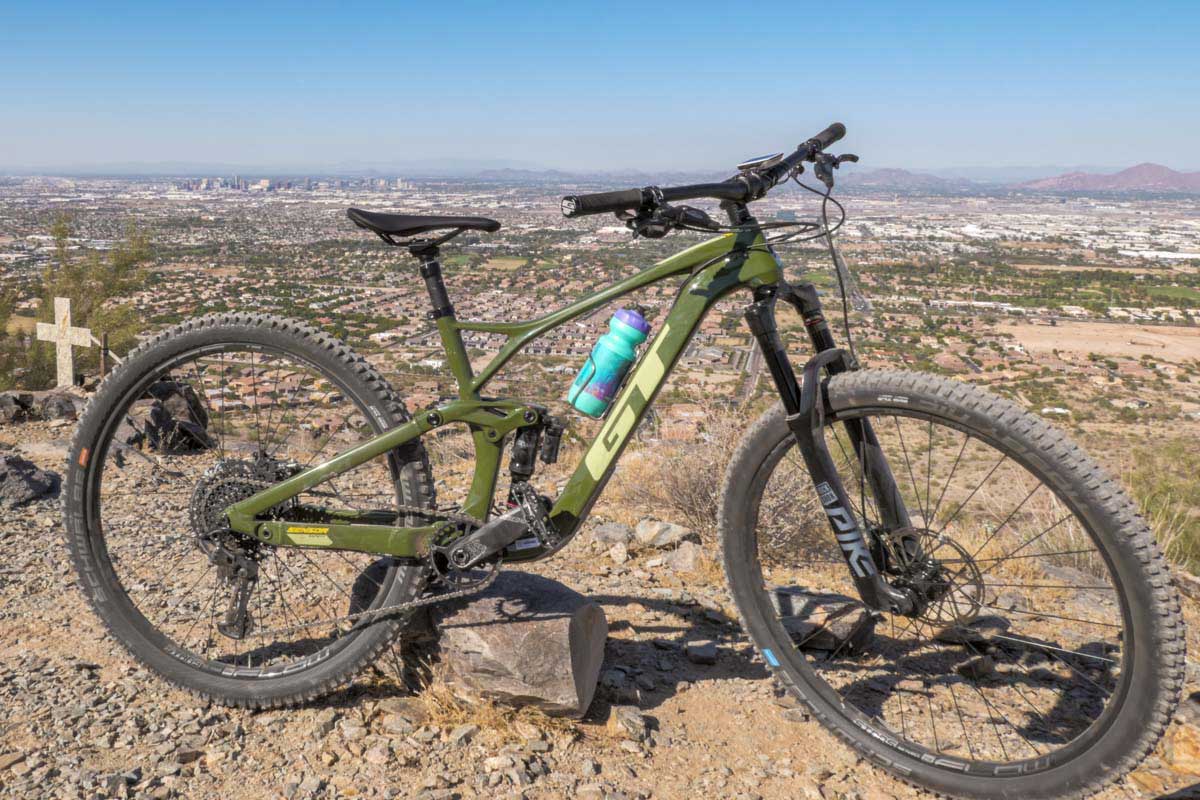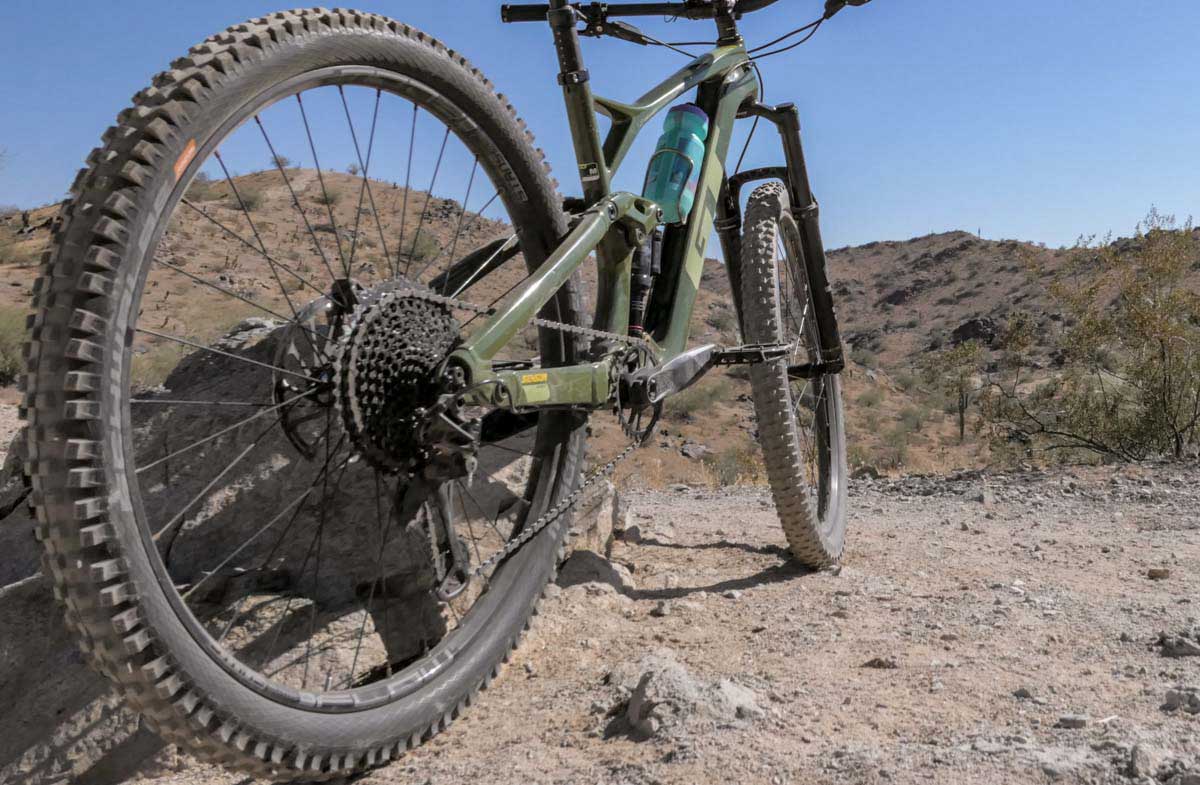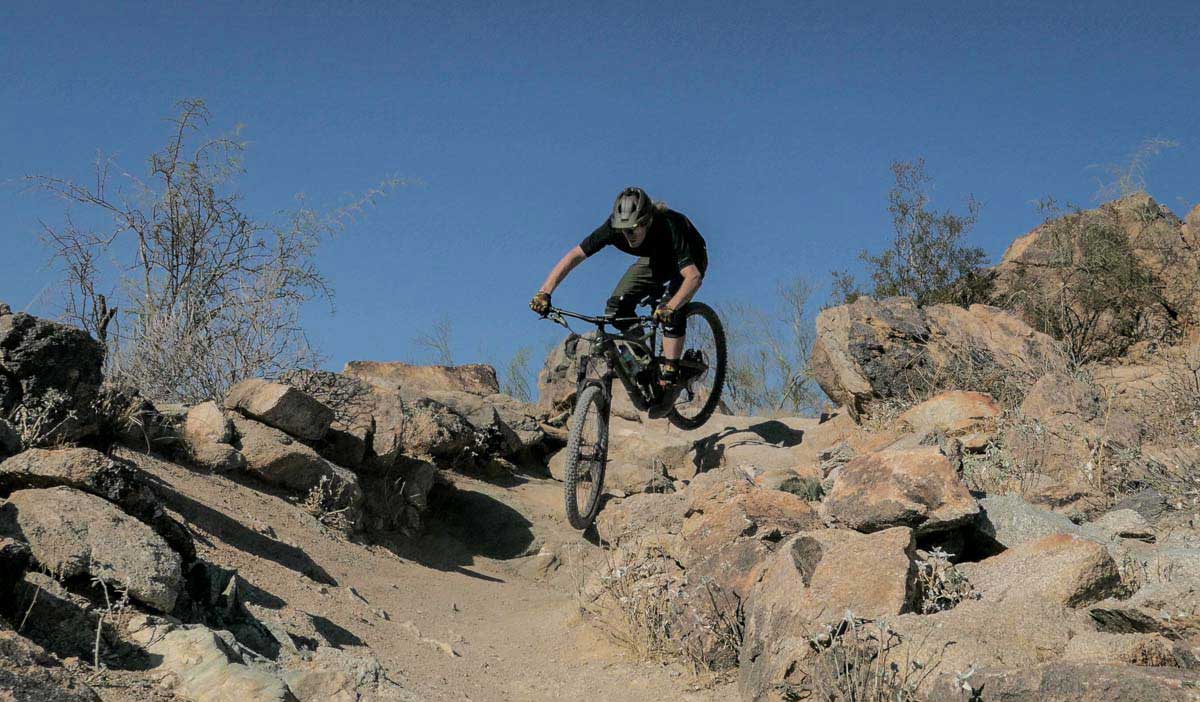GT is known for offering cyclists a big bang for the buck. The frames typically run $500 below others in the category. That money is transferred to kitting out their frames with higher quality components. The Sensor is GT’s trail series 29er, with the Expert slotting in the middle of their carbon fleet. Their Carbon Pro tops the line at $5,500. Below the Expert is the Carbon Elite at $3,250. At $4,350, the Expert is a solidly spec’d bike that strikes the right balance between price and kit.
We’ve been pedaling the Carbon Expert around the Mountain West this fall. From Ely, Nevada, to the Idaho foothills, to Scottsdale, Arizona –riding everything from snappy slalom trails to rollicking backcountry rides– here’s our take.
GT Sensor Expert details & actual weight
2019 saw a completely new version of the Sensor, replacing their complicated iDrive with the tried and true Four-bar link design, with both links pivoting on the seat tube.
Modern slack geometry (66˚ head tube angle, 77˚ seat angle) pushes the front out on descents, and your ass back in the saddle on climbs. It’s crazy comfortable on super technical ground, allowing you to charge everything in your sights.
The carbon front triangle is matched with an alloy rear triangle. The Sensor inspires speed, so the tradeoff pays dividends when the chain whips down descents.
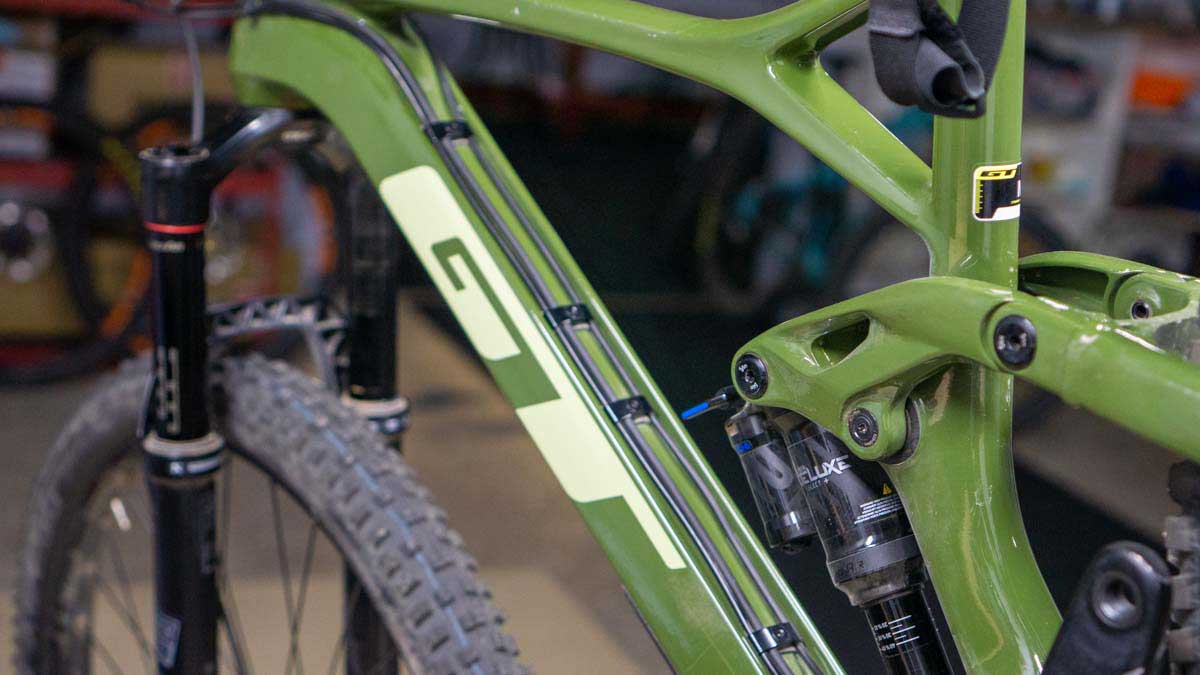
Unlike many of today’s bikes, the cables route externally, tucked in a gutter on the down tube (the groove tube). This makes it easy to replace cables or make adjustments to the dropper post (which we had to do). You have to loosen the cable clips, shimmy the cables down, set the post, then tighten the clips. Fortunately they left enough room to mount a bottle cage in the triangle.
The rear shock mount’s “flip chip” drops the head angle half a degree (from 66˚ to 65.5˚), simultaneously pushing the chainstay and wheelbase out a few extra millimeters.
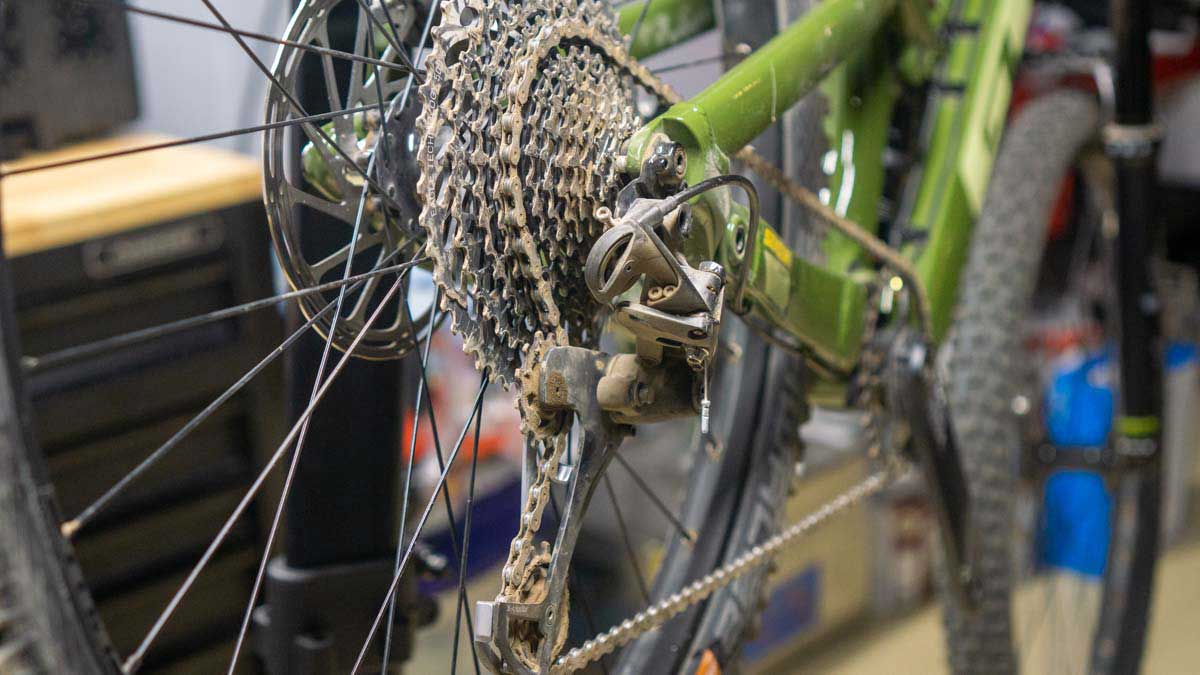
The Sensor Carbon Expert gets SRAM GX Eagle, paired with 180mm SRAM G2 RSC hydro disc brakes. The 1x specific design gets a 32t chainring paired to the Eagle 10-50, 12-speed cog in back. Plenty of gears to grind up technical terrain with stopping power for the descent.
The Sensor is trimmed with Schwalbe Magic Mary Evolution, a 29 x 2.35″ tire, wrapped around Stan’s NoTubes Flow S1. We road the bike both with the stock Schwalbe’s and Panaracer’s Romero/Aliso (2.6 f/ 2.4r respectively) on our Ely, Nevada ride), the bike was mostly ridden stock. We did swap back to the stock Schwalbe’s for some trails in Arizona.
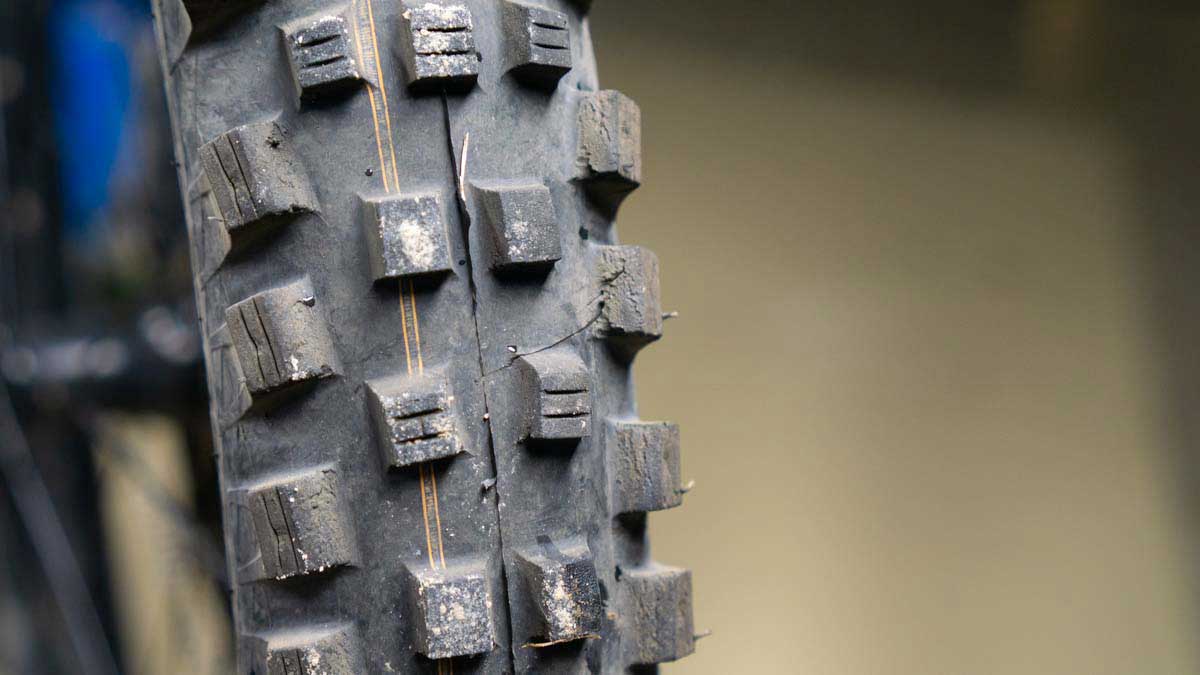
The Schwalbe’s are lightweight and have plenty of rubber for loamy trails in the PNW or the sandy trails found where I ride in Idaho. But we found these particular Schwalbe treads innappropriate for Arizona. A couple of side knobs broke away after a single ride. If we were riding this bike regularly in Arizona, we’d probably run it with Rock Razor’s paired with a set of Nobby Nic’s in front.
The Expert comes stock with the respectable RockShox Pike (which has always been a no brainer for a trail bike set up) and is paired with RockShox Deluxe in back.
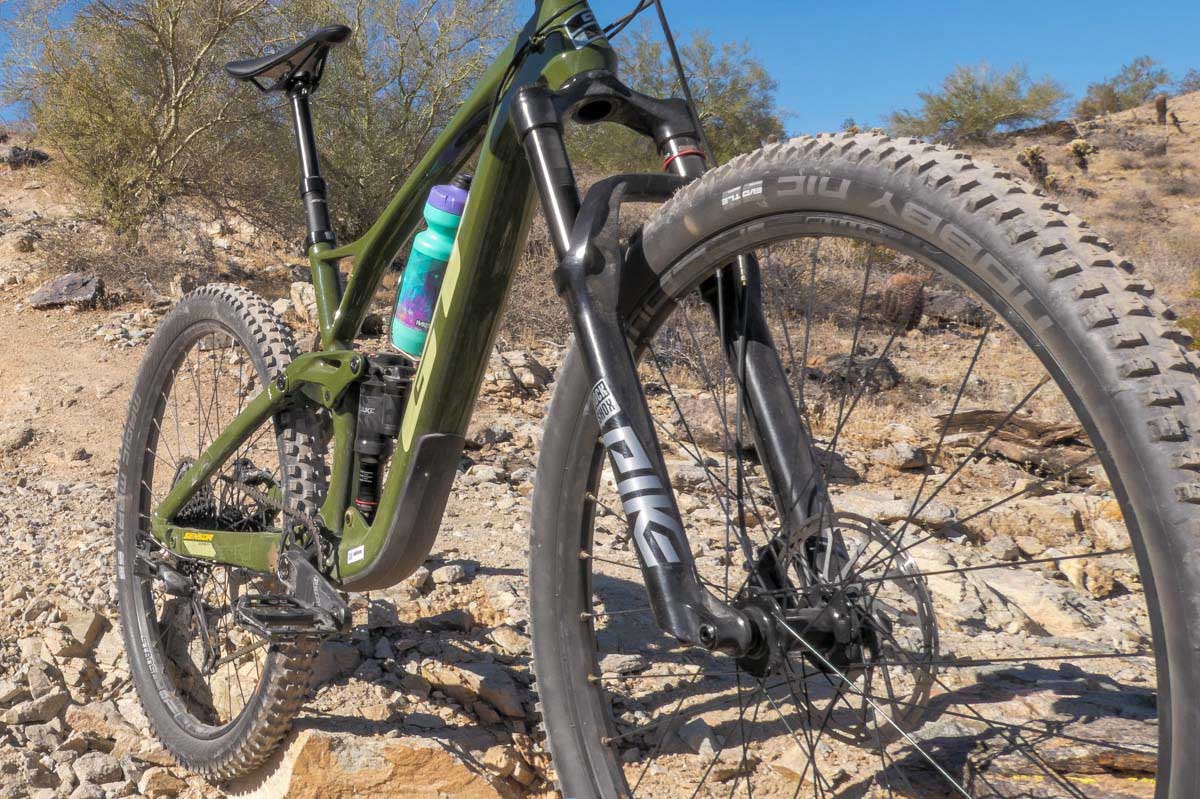
It’s an incredibly balanced suspension that feels more generous than the listed 130mm squish, giving the rider confidence to smash through most anything without losing power to pedal bob on the climbs. We took the bike off some ~4ft drops and it never skipped a beat.
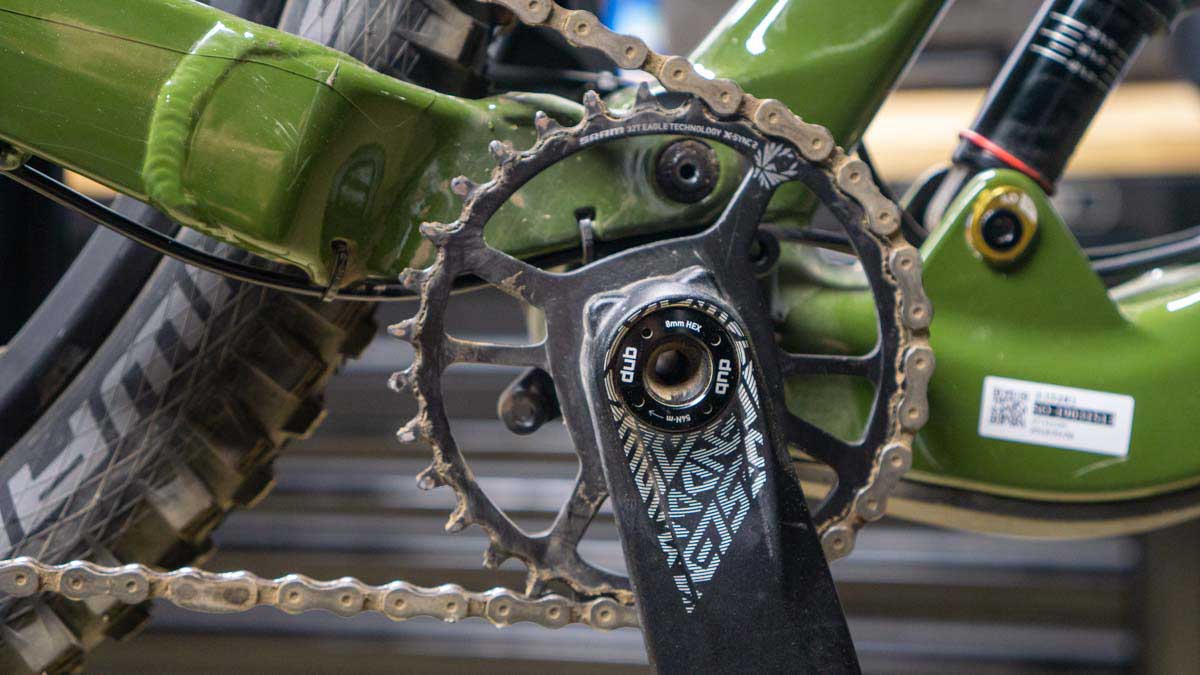
During our stint with the Sensor, the pivot bolt in the 4-bar suspension loosened up after a few rides and began to push out the non-drive side. After figuring out what was wrong (and how to fix it), we finally re-centered the bolt, preloaded the expander bolt, and locked the pivot bolt back in place. We and had no further issues, but it was a good reminder to take any new bike in for service after a few shakedown rides.
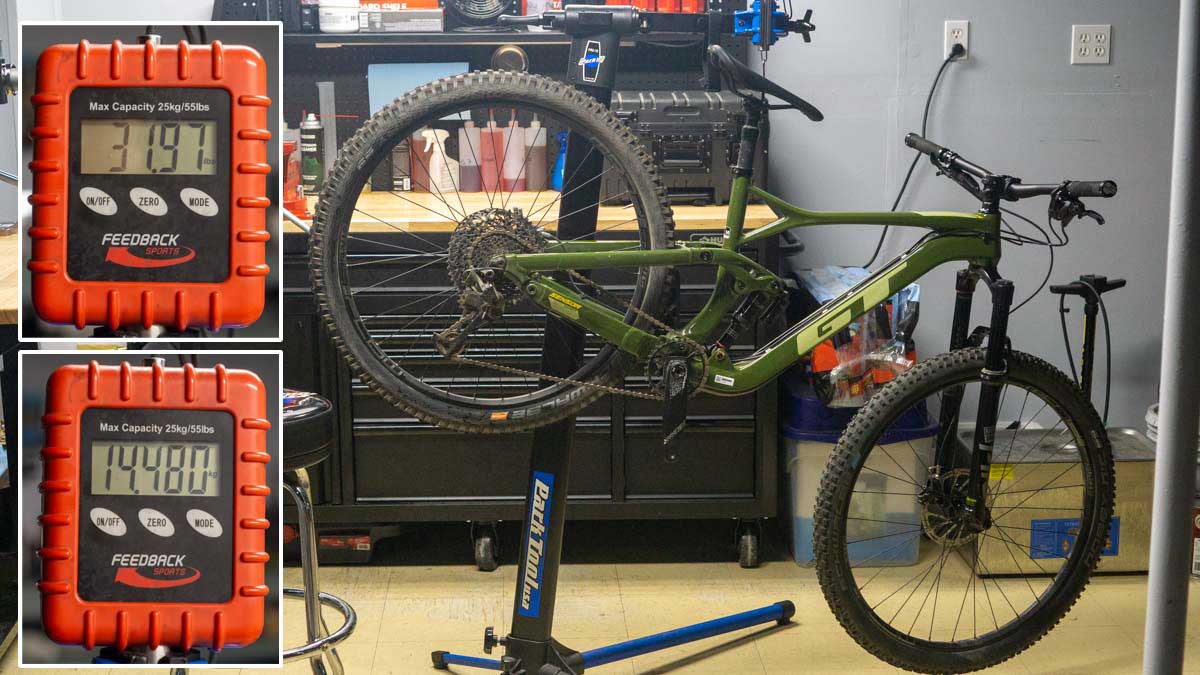
The size medium bike snuck in just under 32 pounds (14.48 kg) on our scales.
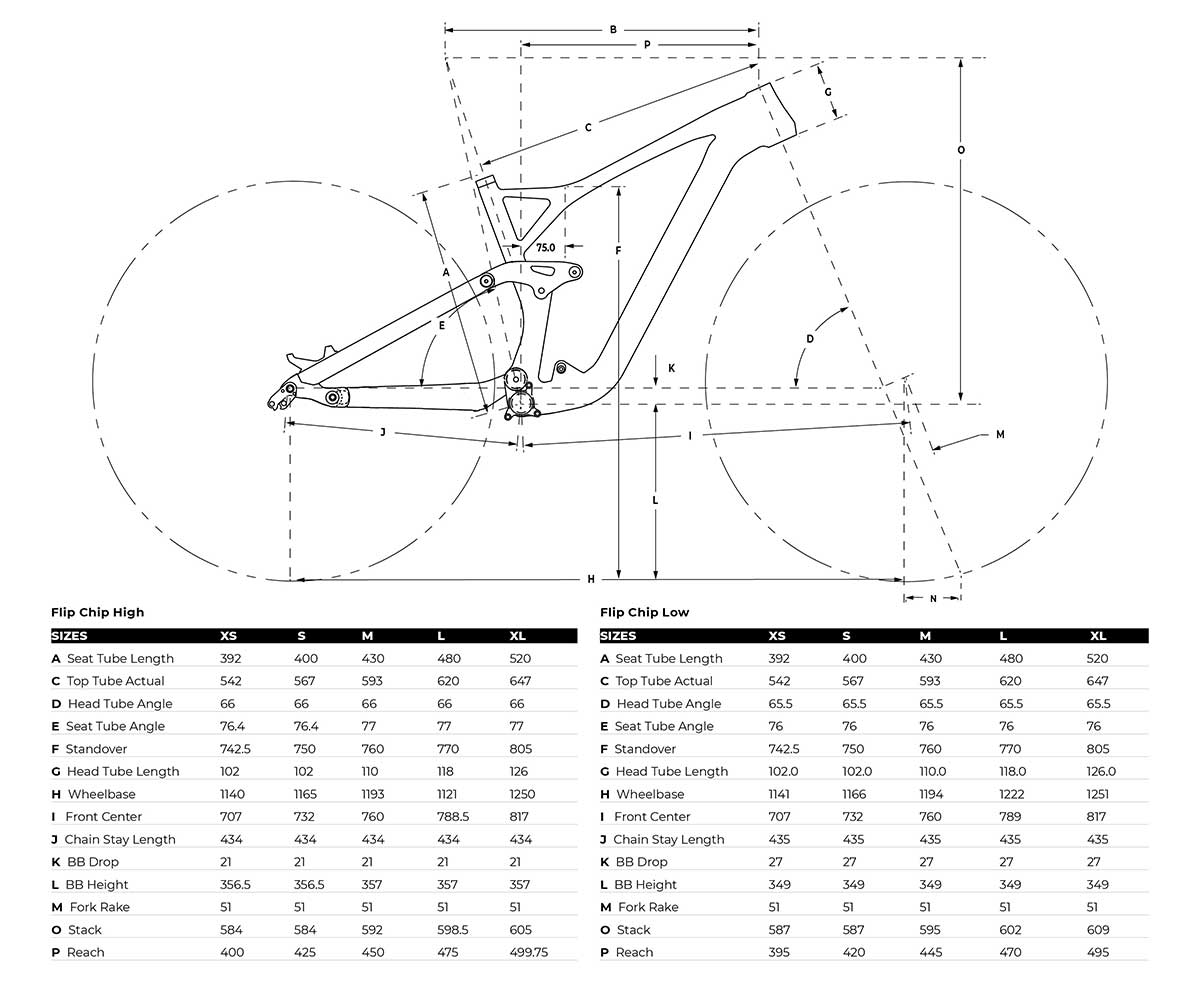
The Sensor is available in S, M (tested), L, and XL sizes.
GT Sensor Expert ride review
For my time on the bike, settings were:
- Flip Chip: Low
- Tires: f26psi / r30psi
- Fork: 80psi
- Rear: 200psi
Climbing. The Sensor was a delight to climb, ascending like an angel up rough trail. Steeps? No problem. Weaving through tight rocky slots? Bring it on. We were amazed how the breezy the Sensor made cleaning technical features. For me (5’10” with average reach) the blunt front end on the medium frame put my weight squarely over the bike. The front-end stayed planted and the back tractored up the hills like a tank.
On less technical climbs –those grunts that force you back in the saddle for an hour plus– well, we would have liked a little more room. The cockpit just felt cramped after sustained time in the saddle. This might have change if the flip chip was set to high or riding a size large (though likely sacrificing its technical ability).
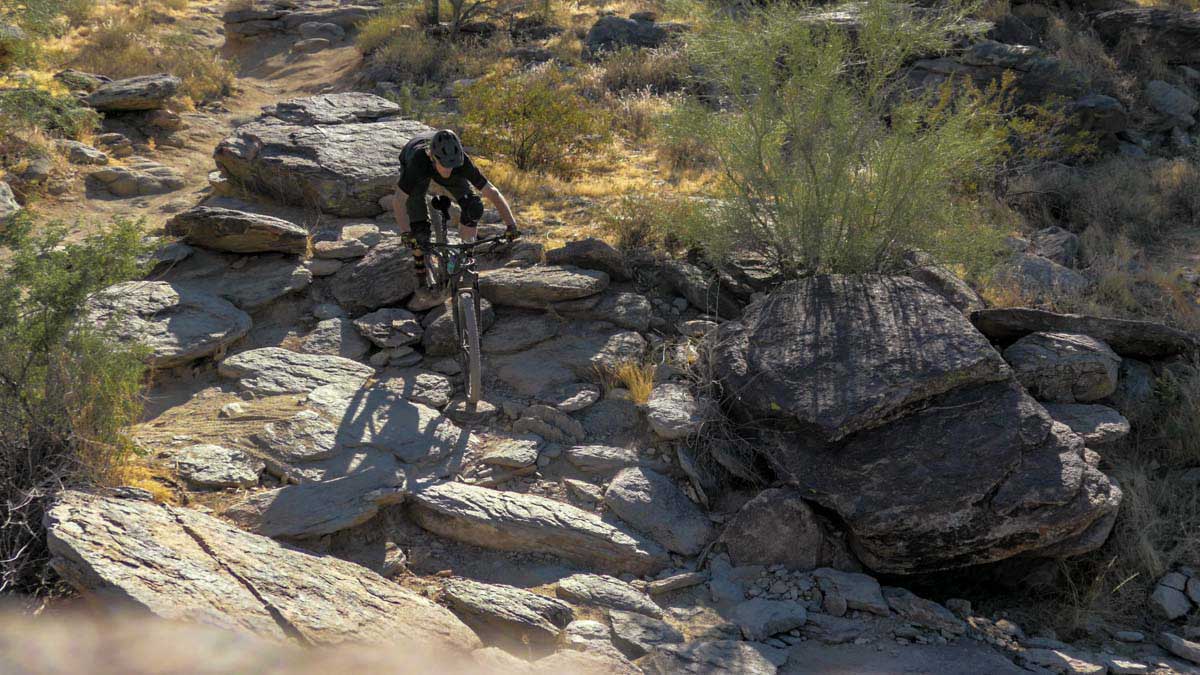
Descending. The Sensor is a ripper. Quick, agile, stiff when you need it … for a bike that made it so easy to get to the top, we were amazed by how well it dove into corners. The rider feels centered in the bike, making it easy to flick it where you want it to go – especially on steep techy descents.
On less technical descents –those long, fast descents where you wanna let loose– we found the Sensor felt less secure, leaving us wondering (again) if a size large would have been better.
Who it’s for. This is all to say, if you’re a rider looking to upgrade from a hardtail or if climbing is your wheelhouse, this is your bike. Riders used to shorter (or no) rear travel will absolutely love how it takes you up hill without losing power. And when you get to the top, you’ll be ready to tackle most trails confidently (probably faster than you’d expect!). Luckily, those four piston brakes can stop you on a dime.
For what you get –Eagle build, Pike fork, carbon-alloy frame– we feel you’re getting a lot of bike that will last and serve as a great foundation if you decide to upgrade.
